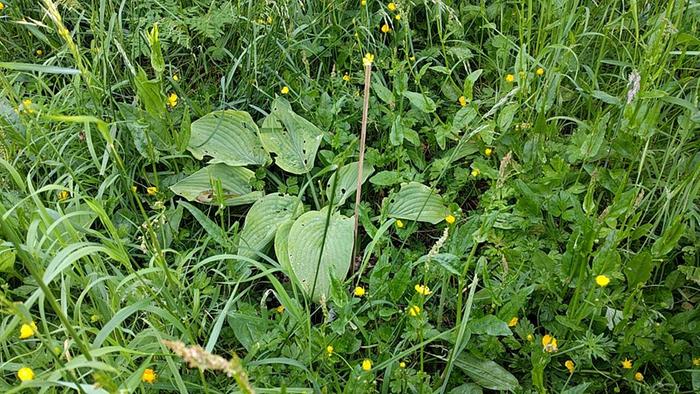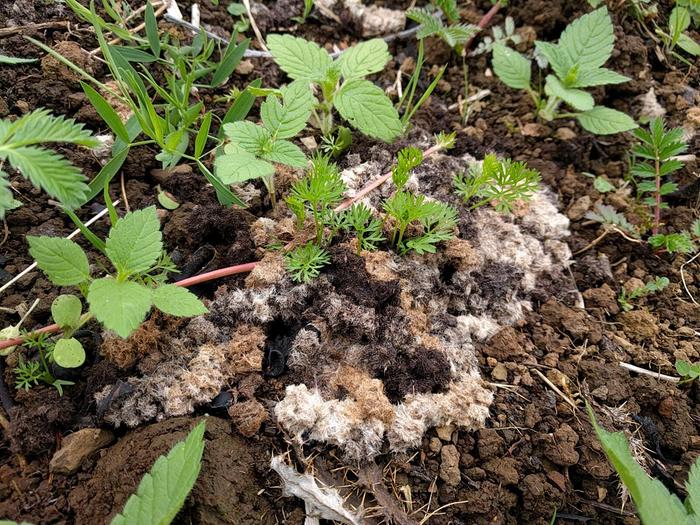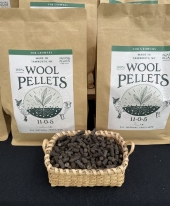

 12
12





How Permies works: https://permies.com/wiki/34193/permies-works-links-threads
My projects on Skye: The tree field, Growing and landracing, perennial polycultures, "Don't dream it - be it! "

 7
7





- Tim's Homestead Journal - Purchase a copy of Building a Better World in Your Backyard - Purchase 6 Decks of Permaculture Cards -
- Purchase 12x Decks of Permaculture Cards - Purchase a copy of the SKIP Book - Purchase 12x copies of Building a Better World in your Backyard
 8
8




Timothy Norton wrote:I'd be curious to see what the pellet does when exposed to water. It doesn't look like wool, but I wonder if it plumps up? Maybe they shred the wool somehow and bind it together?
How permies.com works
What is a Mother Tree ?







 15
15




Timothy Norton wrote:Taking a look at them, I have to be honest I thought they were alfalfa pellets!
I'd be curious to see what the pellet does when exposed to water. It doesn't look like wool, but I wonder if it plumps up? Maybe they shred the wool somehow and bind it together?
I have loads of questions, I hope some others chime in with their observations.












 10
10




How Permies works: https://permies.com/wiki/34193/permies-works-links-threads
My projects on Skye: The tree field, Growing and landracing, perennial polycultures, "Don't dream it - be it! "
 8
8




"The only thing...more expensive than education is ignorance."~Ben Franklin. "We can easily forgive a child who is afraid of the dark; the real tragedy of life is when men are afraid of the light." ~ Plato
 11
11




Carla Burke wrote:I've known for some time, about using wool (particularly the skirted portions) in compost, but haven't done it, because unless the time is taken to cut it up finely, it can be difficult to turn the compost. So, it would, at least theoretically, be much less labor intensive to simply put it directly into the garden. But, I've seen just how long it can take to break down the fibers, done that way. Do the pellets break down and become accessible to the plants substantially faster, or is it just the other matter that was trapped in the matted fibers that breaks down, faster, and the actual wool still breaks down fairly slowly? I guess what I'm actually asking is do the pellets act like a time-release fertilizer? Or, because they're pelletized, do they break down at a more even rate?
https://againfarmstead.com/ | @againandagainfarmstead
 6
6




"The only thing...more expensive than education is ignorance."~Ben Franklin. "We can easily forgive a child who is afraid of the dark; the real tragedy of life is when men are afraid of the light." ~ Plato
 9
9




Carla Burke wrote:Excellent information, E! Thank you!
I do have another question, though. I saw in another thread that it's great for sandy soils, but what about clay soil? Mine is heavy, red clay, with tons of rocks in many sizes (I'm in the Missouri Ozarks). I've all but given up on ever having good soil for planting directly into the ground, in favor of raised beds, for most of my planting. But, some things don't lend themselves well to raised beds and containers - like trees or even bushes. Would the pellets turn my clay into soil deeply enough, simple turning, but without tilling, to plant things like hazelnuts or blueberries, within say a year or two? If there's even a chance of that, how much of the pellets would you recommend for improving say, a 3ftx3ft spot, for a single, medium to large bush (like a hazel or blueberry)?
https://againfarmstead.com/ | @againandagainfarmstead
 6
6




"The only thing...more expensive than education is ignorance."~Ben Franklin. "We can easily forgive a child who is afraid of the dark; the real tragedy of life is when men are afraid of the light." ~ Plato












 7
7






How Permies works: https://permies.com/wiki/34193/permies-works-links-threads
My projects on Skye: The tree field, Growing and landracing, perennial polycultures, "Don't dream it - be it! "












 5
5




- Tim's Homestead Journal - Purchase a copy of Building a Better World in Your Backyard - Purchase 6 Decks of Permaculture Cards -
- Purchase 12x Decks of Permaculture Cards - Purchase a copy of the SKIP Book - Purchase 12x copies of Building a Better World in your Backyard

|
Normally trees don't drive trucks. Does this tiny ad have a license?
Homestead Pastured Poultry course
https://permies.com/wiki/364740/Homestead-Pastured-Poultry
|






